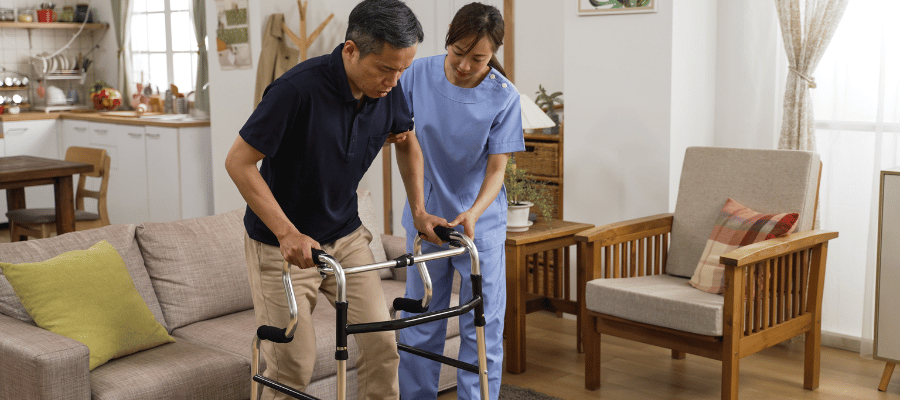Path to Recovery: Effective Post-Surgical Rehabilitation
Introduction
Post-surgical rehabilitation combines the art and science of therapeutic techniques to optimize recovery and functionality following surgery. At Arunalaya HealthCare, we understand that every individual’s needs and goals are unique, and we tailor our programs to address these differences. Whether you require physiotherapy for home visits in Patel Nagar or advanced physiotherapy in Delhi, our team is dedicated to supporting your journey to wellness.
Assessment and Evaluation
This includes:
Comprehensive Evaluation: Reviewing the patient’s medical history, including previous surgeries, medical conditions, medications, and allergies.
Detailed Surgical Assessment: Understanding the type of surgery performed, surgical approach, and any intraoperative complications.
Physical Examination: Assessing range of motion, strength, joint stability, sensation, and overall function.
Outcome Measures: Utilizing functional assessments to establish a baseline and track progress.
Psychosocial Consideration: Factoring in patient expectations, motivation, social support, and potential barriers to recovery.
Pain Management
Effective pain management is a cornerstone of post-surgical rehabilitation.
Individualized Plans: Tailored pain management strategies based on pain type and severity, patient preferences, and potential medication side effects.
Multimodal Analgesia: Combining pharmacological and non-pharmacological interventions to maximize pain relief and minimize adverse effects.
Inflammation Reduction: Using ice, heat, compression, and elevation techniques to alleviate acute postoperative pain.
Chronic Pain Strategies: Implementing relaxation techniques, biofeedback, mindfulness-based interventions, and cognitive-behavioral strategies for persistent pain.
Range of Motion (ROM) Exercises
Restoring flexibility and joint mobility is essential.
Gradual Progression: Moving from passive ROM exercises to active-assisted and active exercises as tolerated.
Stretching and Mobilization: Using stretching techniques, joint mobilizations, and proprioceptive neuromuscular facilitation (PNF).
CPM Devices: Employing continuous passive motion devices and manual therapy to prevent adhesions and maintain joint integrity.
Strength Training
Building strength post-surgery involves.
Targeted Programs: Focused on muscle groups affected by surgery to restore functional strength, endurance, and power.
Progressive resistance: training using free weights, resistance bands, machines, and bodyweight exercises to stimulate muscle hypertrophy and neuromuscular adaptation.
Balanced Contractions: Integrating eccentric, concentric, and isometric contractions to address muscle imbalances and weaknesses.
Functional Training
Enhancing daily activities and sports performance.
Task-Specific Exercises: Improving functional capacity, motor control, and movement patterns.
Balance and Agility: Incorporating balance challenges, coordination drills, and dynamic movements.
Real-Life Simulations: Facilitating transitions back to home, work, and recreational activities.
Manual Therapy
Promoting tissue healing and flexibility.
Tailored Techniques: Based on tissue healing stages, pain levels, and mobility restrictions.
Soft Tissue Mobilization: Including massage, psychological release, scar massage, and trigger point therapy.
Joint Mobilizations: Restoring normal joint movements and alleviating stiffness.
Balance and Proprioception Training
Improving stability and preventing falls.
Progressive Exercises: On stable and unstable surfaces to challenge sensory systems.
Sensory Integration: Enhancing postural stability and dynamic equilibrium.
Perturbation Training: Improving reaction time and fall prevention strategies.
Education and Counseling
Empowering patients with knowledge and support.
Information Provision: About the surgical procedure, recovery timeline, potential complications, and precautions.
Ergonomic Guidance: Teaching proper body mechanics and activity modification.
Psychological Support: Addressing fears, anxieties, and emotional distress related to surgery and rehabilitation.
Progressive Overload
Gradual increase in exercise demands.
Systematic Progression: Of exercise intensity, volume, and complexity to promote tissue remodeling and performance gains.
Rehabilitation Phases: Acute, subacute, and chronic phases with adjustments based on individual responses.
Regular Monitoring: To track progress, identify barriers, and modify treatment strategies.
Monitoring and Adjustment
Ongoing assessment to ensure optimal recovery.
Patient Response: Monitoring pain levels, functional outcomes, adherence to home exercises, and activity compliance.
Reassessment: Regularly evaluating joint mobility, muscle strength, and functional capacity to adjust goals as needed.
Conclusion
Embarking on the path to recovery after surgery can be a challenging journey, but with the right approach and support, optimal healing and functionality are within reach. At Arunalaya HealthCare, we prioritize personalized rehabilitation plans that encompass comprehensive assessments, pain management strategies, and progressive strength training. Our holistic approach integrates functional training, manual therapy, and balance exercises, ensuring a well-rounded recovery. With continuous monitoring and adjustments, we aim to empower our patients with the knowledge and tools needed for sustained recovery and a return to their daily activities.
Post-surgical rehabilitation at Arunalaya HealthCare is designed to help patients recover effectively and safely. Whether you need physiotherapy for home visits in Patel Nagar, advanced physiotherapy in Delhi, or specialized treatments like CP or chest physiotherapy, our dedicated team is here to support you every step of the way.
physiotherapy for home visit in patel nagar | physiotherapy in pitampura | best physiotherapist in rajender nagar | physiotherapy in naraina | best physiotherapist in inderpuri | physiotherapy center in punjabibagh | physiotherapy in punjabi bagh| physiotherapy in karol bagh | sports injury centre in delhi | sports physiotherapist in patel nagar | sports rehab center in patel nagar | cp treatment | physio clinic near me in delhi | chest physiotherapy near me | advanced physiotherapy in delhi | best sports injury physiotherapist in delhi | best sports injury physiotherapy in delhi | sports physiotherapist in delhi | back pain physiotherapy near me | home visit physiotherapy in delhi | physiotherapy center in delhi | best physiotherapist at home in patel nagar | physiotherapy in patel nagar | physiotherapist in patel nagar


